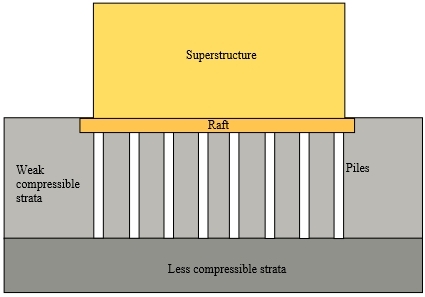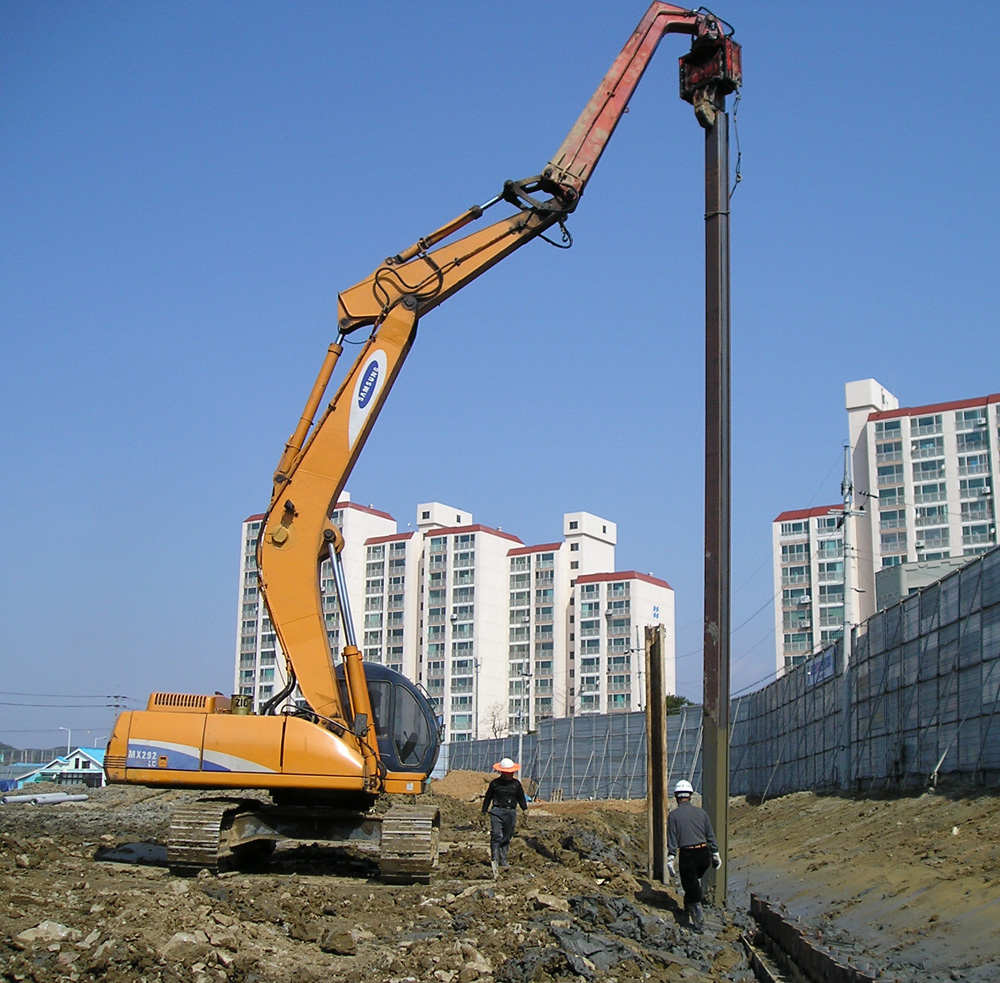Piling mat
Pile foundations are a type of deep foundation, principally used to transfer loads from superstructures, through weak, compressible strata or water onto stronger, more compact, less compressible and stiffer soil or rock at depth. They are formed by long, slender, columnar elements typically made from steel or reinforced concrete, or sometimes timber.
They are constructed by displacement (driven) or replacement (bored).

|

|
A piling mat is a type of working platform used for piling rigs to travel on, providing a stable base on which they can move around the site and operate.
The design of piling mats will depend on the ground conditions and the piling equipment being used, as well as the rig loadings (which typically range from 5 to over 150 tonnes). If a piling mat is too deep it will be incurring unnecessary costs, whilst if it is too shallow it may need time- and cost-inefficient repairs. A soft spot in the surface of just 1 sq. m, can be enough to unbalance a rig.
Typically, the top of a piling mat will be around 600 mm above the pile cut-off level, and it will extend beyond the outermost pile positions by at least 2 m. The edges of the mat and the ramps onto and off it should be clearly marked.
The most suitable materials for piling mats are generally well-graded natural gravels, clean-crushed concrete, crushed hard rock, and so on. As long as it has rebar and timber removed, graded recycled demolition material can also be used. Mats are rolled and compacted in layers. The mat should be free-draining to prevent any build-up of water or slurry on its surface. On sites with a high water table, a separating membrane may be positioned between the mat and the sub-grade to prevent the upward migration of fine-grained soils into the mat.
Piling mats should be inspected daily to ensure they are in proper working condition. If any excavations, trenches or holes have formed in the surface, they must be properly backfilled to ensure they are as stable as the rest of the mat.
It is mandatory that every site with an operational piling rig has a Working Platform Certificate (WPC) that states the piling mat has been correctly designed and installed. The WPC must be signed by the principal contractor and provided for the piling contractor before any piling commences on the site.
[edit] Find out more
[edit] Related articles on Designing Buildings Wiki
Featured articles and news
Designing Buildings reaches 20,000 articles
We take a look back at some of the stranger contributions.
Lessons learned from other industries.
The Buildings of the Malting Industry. Book review.
Conserving places with climate resilience in mind.
Combating burnout.
The 5 elements of seiri, seiton, seiso, seiketsu and shitsuke.
Shading for housing, a design guide
A look back at embedding a new culture of shading.
The Architectural Technology Awards
The AT Awards 2025 are open for entries!
ECA Blueprint for Electrification
The 'mosaic of interconnected challenges' and how to deliver the UK’s Transition to Clean Power.
Grenfell Tower Principal Contractor Award notice
Tower repair and maintenance contractor announced as demolition contractor.
Passivhaus social homes benefit from heat pump service
Sixteen new homes designed and built to achieve Passivhaus constructed in Dumfries & Galloway.
CABE Publishes Results of 2025 Building Control Survey
Concern over lack of understanding of how roles have changed since the introduction of the BSA 2022.
British Architectural Sculpture 1851-1951
A rich heritage of decorative and figurative sculpture. Book review.
A programme to tackle the lack of diversity.





















Comments
Please state where, other than on the PSF website, it is mandated that a WPC to be used as verification of a piling mat. As temporary works, a working platform could be commissioned through a permit to load like any other BS 5975-managed system.